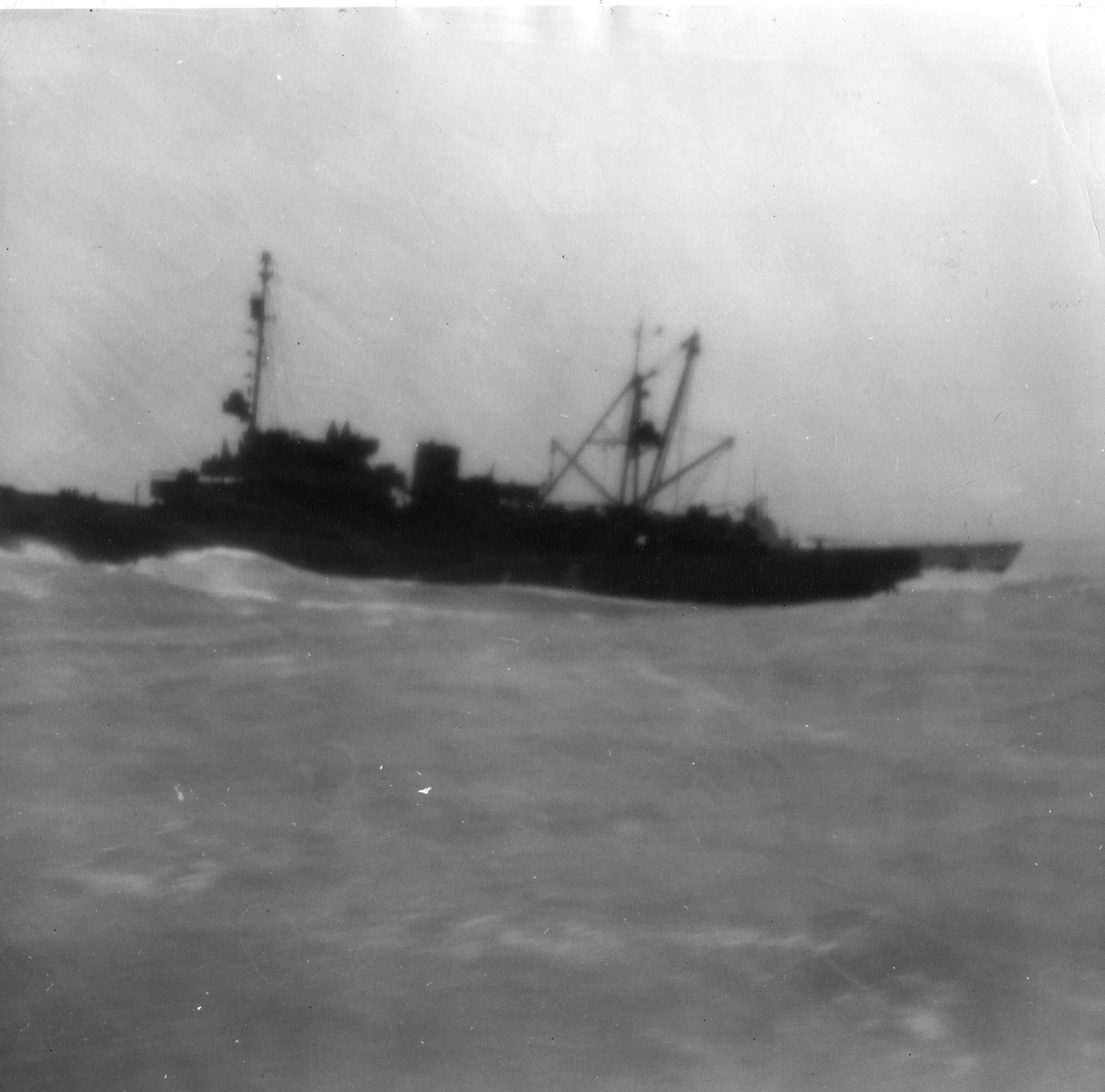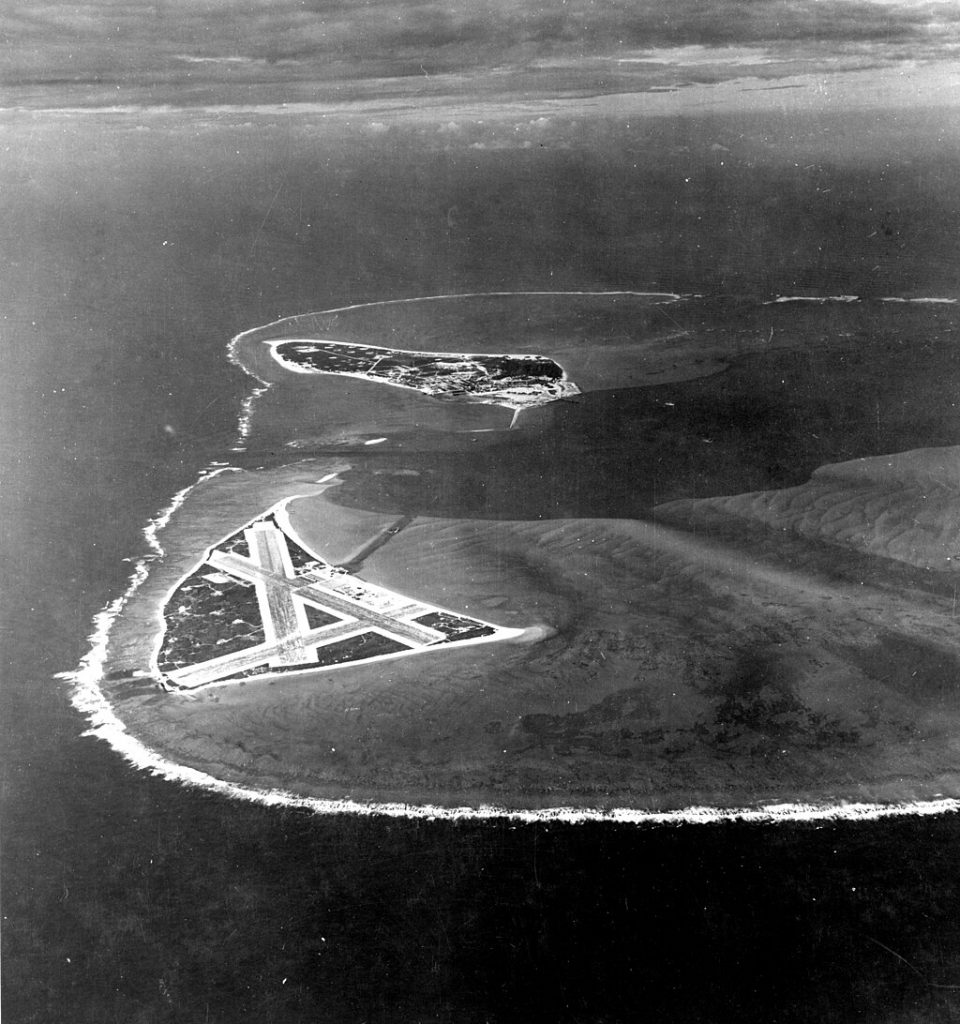
Geologically one of the Hawaiian Islands, Midway began as a volcano that popped up from the Pacific tectonic plate over a plume or “hot spot” in the asthenosphere, the geologic layer just beneath the earth’s crust, near the present site of the Big Island of Hawaii about 27 million years ago. As the Pacific plate drifts northwestward, new volcanos keep forming over the plume and the old ones march off toward the summer sunset at the stately pace of about three inches a year.
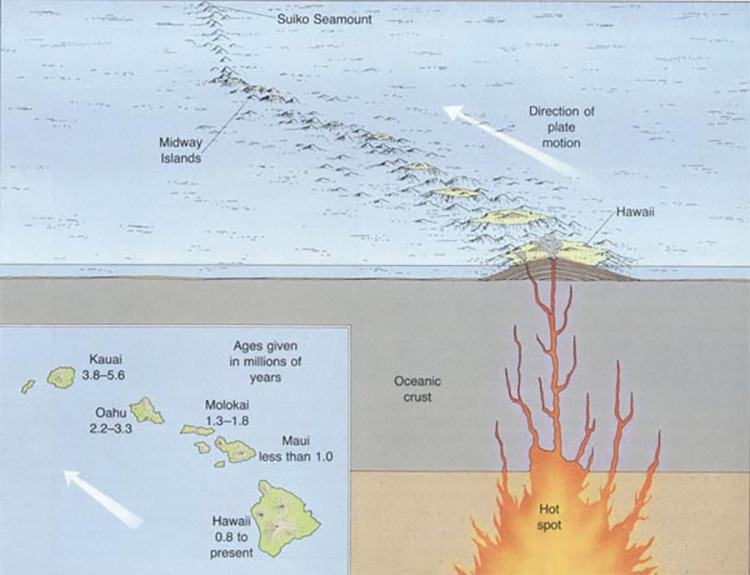
Eighty-two million years or so of tectonic sliding has brought Meiji Seamount (a seamount is an underwater mountain), the oldest and northernmost volcano in the chain, to the brink of the Kuril-Kamchatka Trench just off the coast of Siberia’s Kamchatka Peninsula. The northern flank of Meiji has reportedly slipped into that trench and is undergoing subduction beneath the far western reaches of the North American Plate. If there were older peaks in the chain, they have already met that fate. Meanwhile more than eighty other volcanoes, almost all of them similarly submerged, are slowly gliding to their doom behind Meiji in a line 3,600 miles long that describes the wings of a bird in flight, Meiji representing one wing tip and the Big Island of Hawaii the other; and a new volcano, Loihi Seamount, is building about 22 miles off the south coast of Hawaii. It has climbed about two miles from the ocean floor to within about two-thirds of a mile of the surface and, if current trends continue, one day ten thousand to a hundred thousand years from now it will break that surface and give the state of Hawaii a new island or merge with the island of Hawaii and give it some dramatic new acreage.
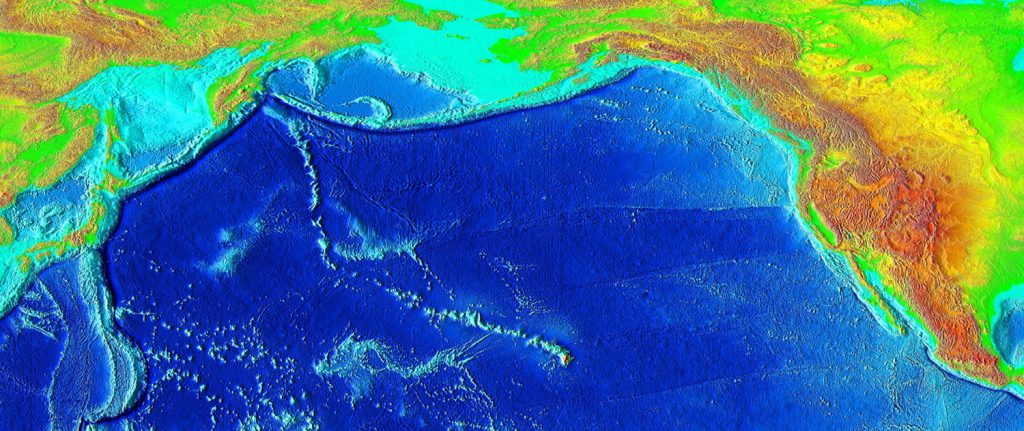
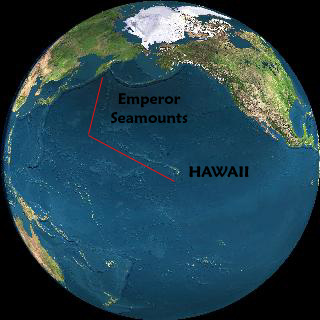
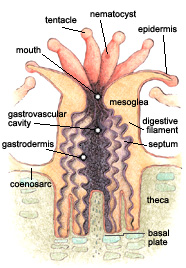
Often referred to as Midway Island, Midway is in fact an atoll containing two main islands, Eastern and Sand, and a smattering of tiny islets. An atoll is a coral reef, usually more or less ring-shaped, and the lagoon it encircles. The coral that forms a reef consists of the aggregated calcium carbonate exoskeletons of primitive little sea creatures called polyps. A typical coral polyp has a profile not unlike that of a paper sack wearing a medieval jester’s cap. The cap, however, is no joke. It consists of tentacles tipped with venomous stinging cells called nematocysts by means of which the polyp seizes prey. As primitive as polyps are—they consist of little more than a mouth, a stomach and a mop of these tentacles, and have undergone no significant evolutionary change over the last half a billion years or so—the nematocyst is a barbed marvel of mechanical brutality straight out of a medieval armory. The polyp discharges it like a harpoon in a small fraction of a second, inserts a tube from it into its prey, often a small crustacean or fish larva, injects its victim with a paralyzing agent, draws it in by its tentacles to its mouth and devours it. Coral can be deadly to tiny sea creatures and mighty warships alike.
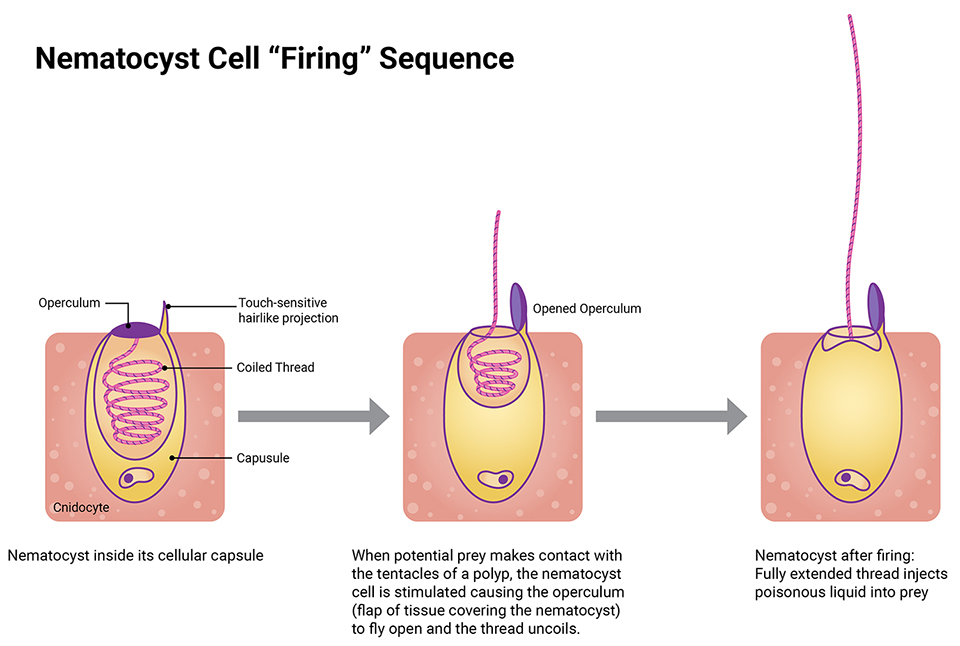
Unlucky passersby comprise one source of sustenance for polyps. Another consists of colorful algae called photosynthetic dinoflagellates, single-celled organisms that live by the billions within the translucent polyps and give them their bright hues. Polyps feed on byproducts of the photosynthesis their resident dinoflagellates engage in. Polyps grow only underwater, but not too far under. Because the parasitic algae they rely on require sunlight, most polyps do too; coral is seldom found at depths of more than two hundred feet. And being stationary, they need a surface to grow on. Undersea surfaces less than two hundred feet deep are most often found just offshore, which is typically where coral reefs form—just off tropical and subtropical shores. They don’t do well in colder water. Midway’s near neighbor Kure Atoll, about seventy miles west and thirteen north, is the northernmost atoll in the world.
When polyps die, their soft tissue innards decompose but their rigid exoskeletons endure in conglomerations that can grow over time into vast, mostly underwater structures. The Great Barrier Reef, the world’s largest reef system, comprising almost three thousand individual reefs and about nine hundred islands, stretches about 1,400 miles along the northeast coast of Australia and covers an area half the size of Texas. The overall structure of the Great Barrier Reef is linear. With atolls, the shape tends to be more or less circular. In Midway’s case, the reef, in satellite view, describes a puffy, rounded sort of triangle, the base having a moderate northeasterly tilt. Given the natural channels through the side facing northwest—channels that might stand in for facial features—it suggests a low-browed protohuman skull in profile, gazing vacuously, probably toward Kamchatka, but arguably toward Japan.
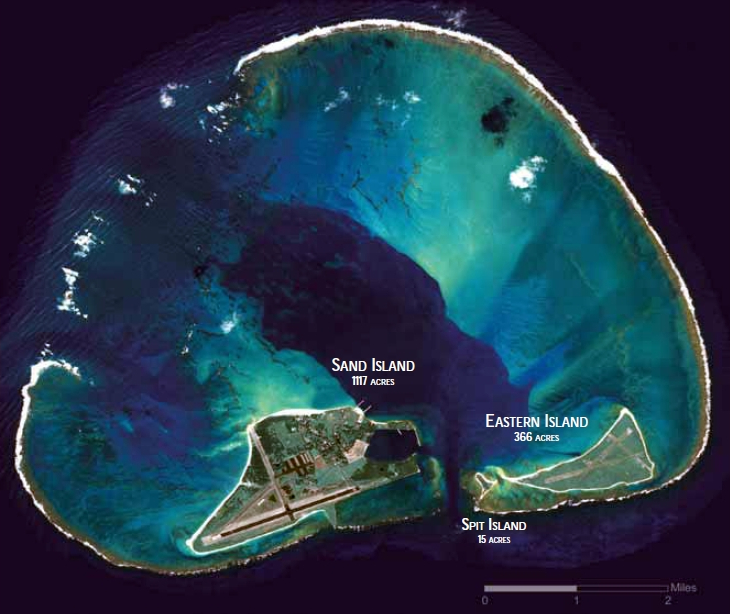
Two geologic processes often collaborate in lowering a volcanic island’s profile. One is called isostasy, the process whereby crustal features such as mountains or mountain ranges achieve a state of equilibrium between the force of gravity pulling them down and the opposing forces buoying them up. As a volcano grows, its added weight causes it to settle into the viscous asthenosphere underneath it, just as adding ballast to a boat or bulk to a human body will cause the vessel in question to sink somewhat into the water or the sofa, as the case may be. The other such force is erosion. Once tectonic plate movement shifts a marine volcano off its plume, erosion starts nibbling away at it. If at its peak the volcano projected above sea level, given enough time, erosion and isostatic settling, the ocean will swallow it back up. An atoll is a coral necklace encircling the stump of a wasted, usually volcanic island that has all but vanished back into the sea.
The two wings of the volcanic chain of which the Hawaiian Islands are a part—the Emperor Chain to the north, the Hawaiian Ridge to the southeast—form an angle of about sixty degrees. Midway sits on the shoulder of the southeastern wing, about 450 miles southeast of the bend. First named Brooks Islands and Shore (or, by another account, Middlebrook Islands) after N. C. Brooks, the ship’s captain who discovered it in 1859, Midway took on the name merchant sailors applied to it because of its location about halfway between San Francisco and Tokyo. On August 28, 1867, Capt. William Reynolds of the USS Lackawanna took formal possession of the atoll for the United States on the strength of the Guano Act of 1856, the same legislation the US used to justify its claim to Funafuti, making Midway’s islands the first offshore Pacific islands annexed by the United States.

Midway features prominently in The Wrecker (London: Cassell & Co., 1892), an adventure novel coauthored by Robert Louis Stevenson and his stepson Lloyd Osborne. In it, their hero and narrator, Michigan native Loudon Dodd, describes his first view of Midway, to which he and a business associate have sailed to retrieve a mysteriously abandoned merchant vessel they have purchased. (The names Dodd’s “Directory” assigns the “two islets” in the following passage subsequently changed to Eastern and Sand.)
I climbed into the rigging, stood on the board, and eagerly scanned that ring of coral reef and bursting breaker, and the blue lagoon which they enclosed. The two islets within began to show plainly—Middle Brooks and Lower Brooks Island, the Directory named them: two low, bush-covered, rolling strips of sand, each with glittering beaches, each perhaps a mile or a mile and a half in length, running east and west, and divided by a narrow channel. Over these, innumerable as maggots, there hovered, chattered, screamed and clanged, millions of twinkling sea-birds: white and black; the black by far the largest. With singular scintillations, this vortex of winged life swayed to and fro in the strong sunshine, whirled continually through itself, and would now and again burst asunder and scatter as wide as the lagoon…
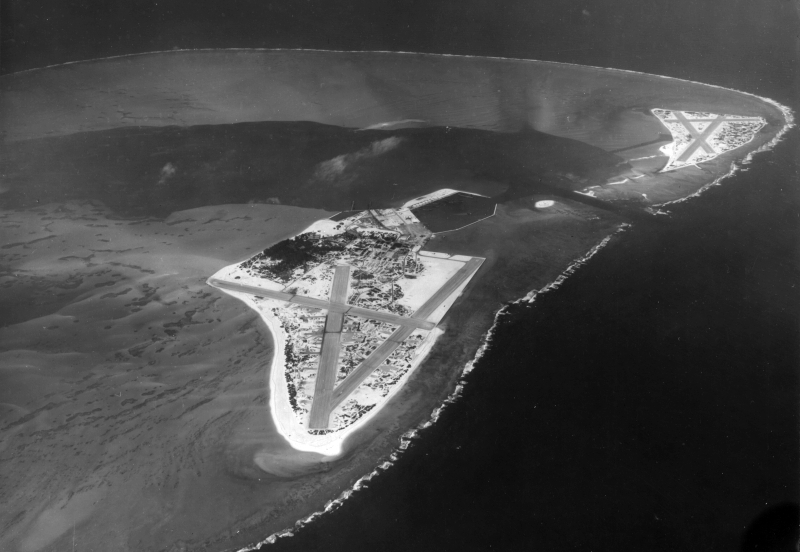
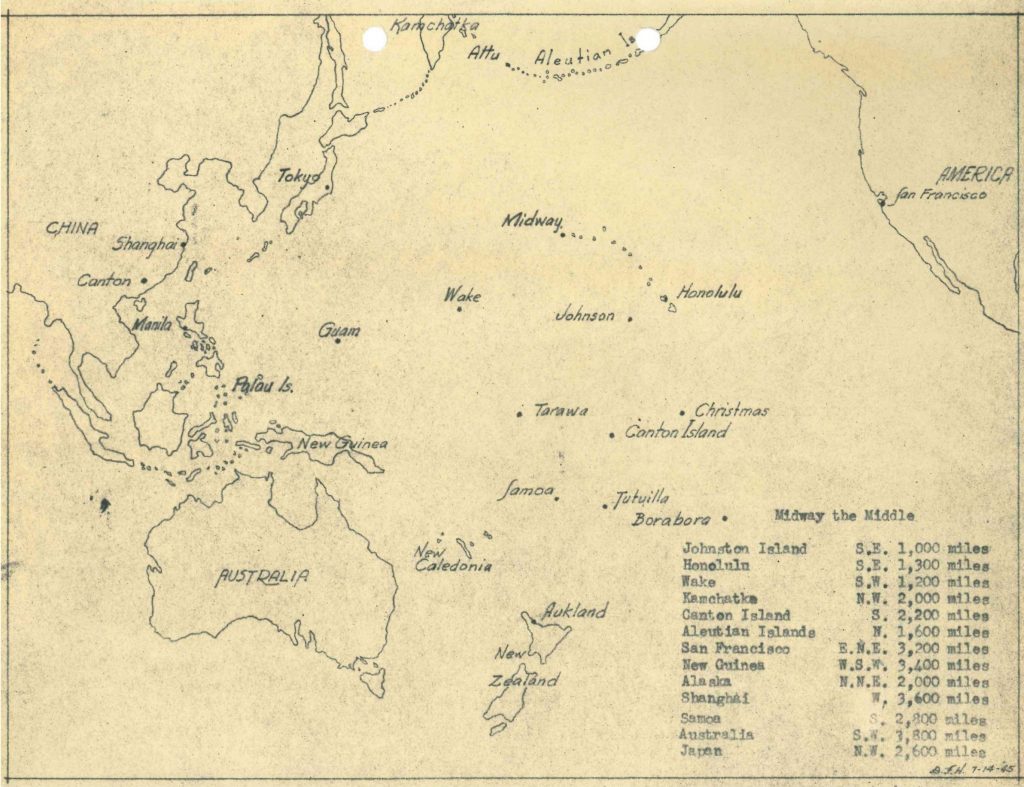
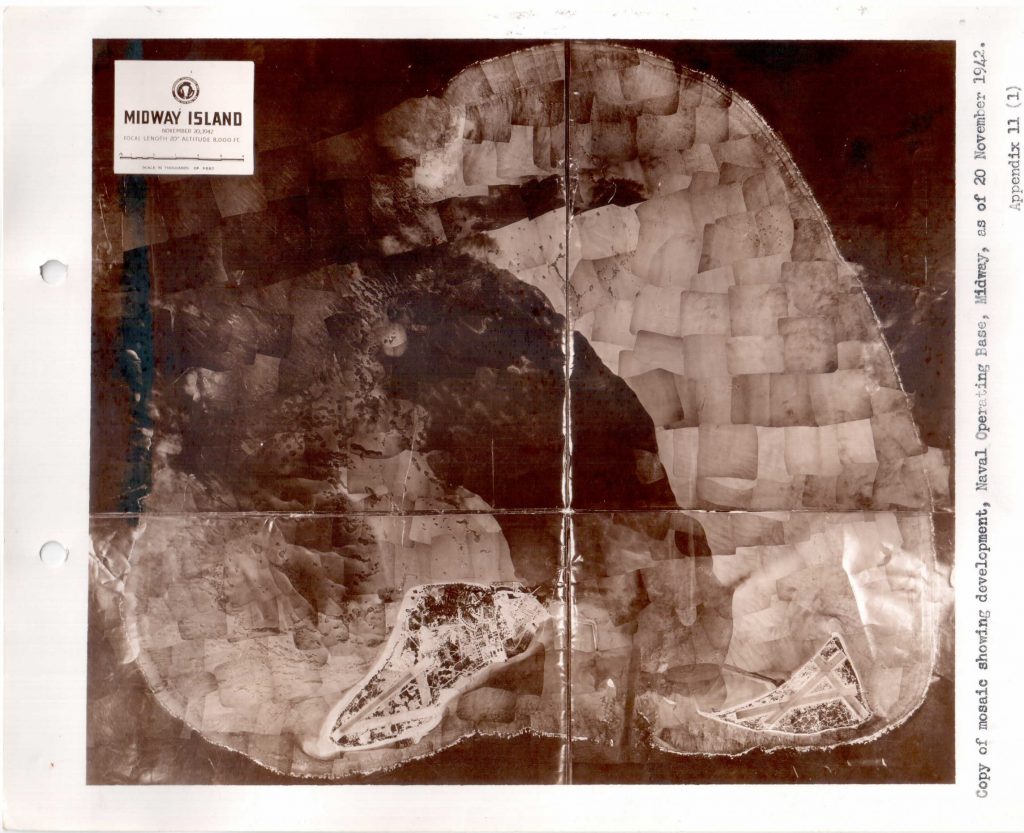
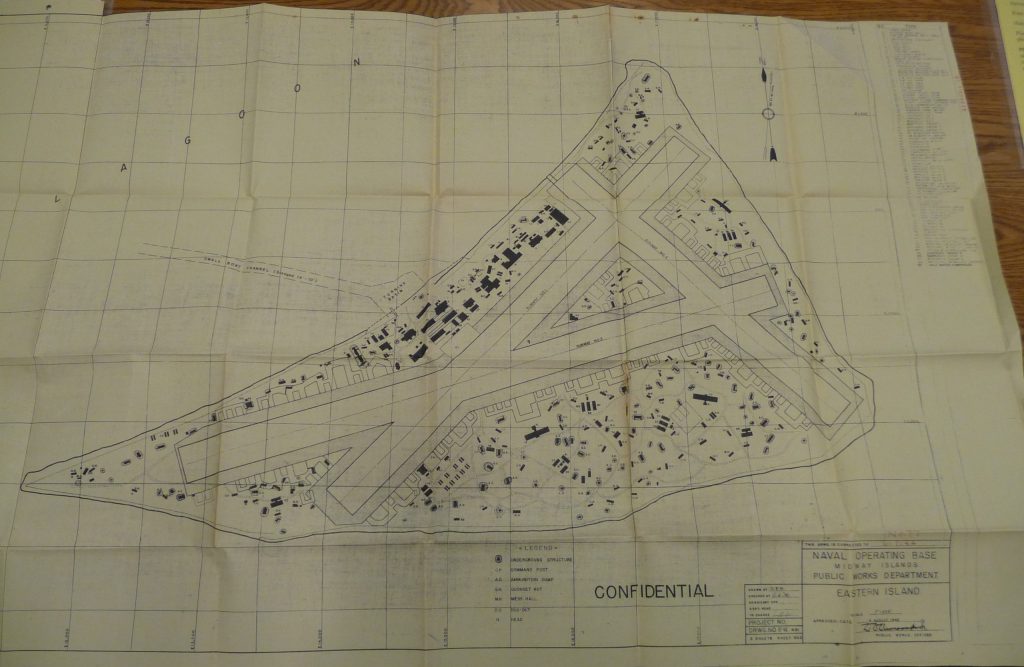
Chronology of events at Midway
1859 July 5
Captain N.C. Brooks of the Hawaiian bark Gambia discovers Midway.
1867 August 28
Capt. William Reynolds of USS Lackawanna takes possession of “Middlebrook Islands” for the US, making them the first offshore islands annexed by US.
1870 Congress appropriates $50,000 for dredging of 600-foot-wide channel through reef into lagoon, perhaps at urging of North Pacific Mail and Steamship Company, which is seeking a mid-Pacific coal depot. USS Saginaw arrives March 24 with men and supplies but bad weather hampers dredging. After seven months project is abandoned; Saginaw wrecked on Kure Island en route back to Honolulu. (See Resture and Last Cruise of the Saginaw by George H. Read.)
1886 November 16
Schooner General Siegel shipwrecked during storm.
1888 February
British bark Wandering Minstrel shipwrecked in Welles Harbor during storm.
1889 March Schooner Norma rescues remaining Siegel and Minstrel castaways.
1903 January 20
Pres. Theodore Roosevelt places Midway under control of US Navy.
1903 April 29
Commercial Pacific Cable Company’s first contingent arrives.
1903 June 3
Navy ejects Japanese poachers and appoints Commercial Pacific Cable Company as island custodians.
1903 July 4
Midway serves as relay station for first “around the world” cable message.
1904 May
Twenty-man Marine Corps garrison established.
1906 May 13
Dr. Miller, USN, dies at 5:20 am. First naval death recorded at Midway.
1908
Marine detachment ordered away from Midway Island.
1921
Navy commences using Midway as rendezvous for vessels on East-West Pacific runs. Washington Naval Treaty (1921-22) forbids fortifying Midway but allows commercial enterprises.
1923
Cable firm blasts channel for undersea cable through south reef.
1924
Midway investigated by Cmdr. Rodgers of USS Pelican as seaplane base and used for rendezvous of USS Seagull and eight submarines.
1934
Japan denounces Washington Treaty (1922), triggering naval armaments race.
1935 April 12
Pan American World Airways ship North Haven arrives to set up airbase. Weekly Trans-Pacific Flying Clipper seaplane service initiated soon after.
1935 May
Navy conducts fleet maneuvers off Midway. Advance base established and amphibious operations carried out.
1938 May 19
USS Oglala and USS Beaver arrive with men and materials from Hawaiian Dredging Company to dredge channel for seagoing ships.
1940 March
Private contractors start construction of runways on Eastern Island and other infrastructure on Sand Island in preparation for possible hostilities.
1940 March 4
USS Swan, a minesweeper-type aircraft tender, enters lagoon by way of new channel through south reef.
1940 March 27
USS Sirius arrives with men and materials for construction of naval air station. Lieut. D. B. Ventries, USN, relieves cable firm of custody of islands.
1940 June
Marine garrison returns.
1940 July 18
Part of US fleet arrives.
1941 August 1
US Naval Air Station Midway commissioned under command of Cmdr. Cyrill T. Simard (USN).
1941 November 9
Japanese Ambassador Kurusu and secretary Yuki arrive on Pan Am Clipper en route to what purports to be peace conference in WDC.
1941 November 12
Ambassador Kurusu and Yuki depart.
1941 December 7
Notice of commencement of Japanese-U.S. hostilities received 6:30 a.m
Midway bombarded by Japanese ships. Four US servicemen killed: 1st. Lt. George H. Cannon, USMC; Ens. Donald J. Kraker, USNR; Pfc. Elmer R. Morrell, USMC; and F 2/C Ralph E. Tuttle, USN. 1st. Lt. George H. Cannon earns Medal of Honor. Reinforcements rushed from Hawaii.
1942 June 3-6
Battle of Midway.
1942 July 15
Submarine base at Midway commissioned.
1942 July 29
Naval Operating Base Midway established.
1943 January 1
Sand Island landing field, composing three landing strips, ready for use.
1944 August
Extensions to Sand Island landing strips completed. Large landplane activity shifted from Eastern Island to Sand Island.
1944 September 16
Sand stabilization program set up. Planting of shrubs, grass and trees commenced.
1944 October
Naval Air Transport Service set up on Sand Island.
1945 August 14
Japan surrenders.
1945 October 7
Demobilization begins. Eastern Island abandoned.
Sources:
Midway-Island.com
“Midway—The North Pacific’s Tiny Pet” by Homer C. Votaw in Proceedings, vol. 66/11/453, Nov 1940, https://www.usni.org/magazines/proceedings/1940/november/midway-north-pacifics-tiny-pet
inter alia
